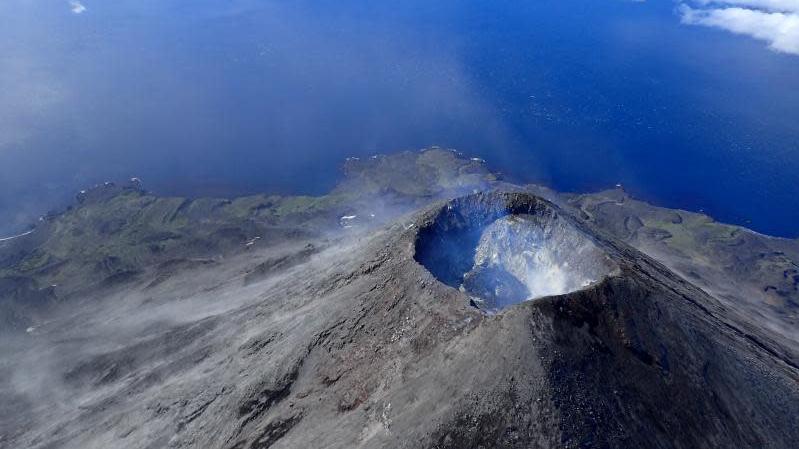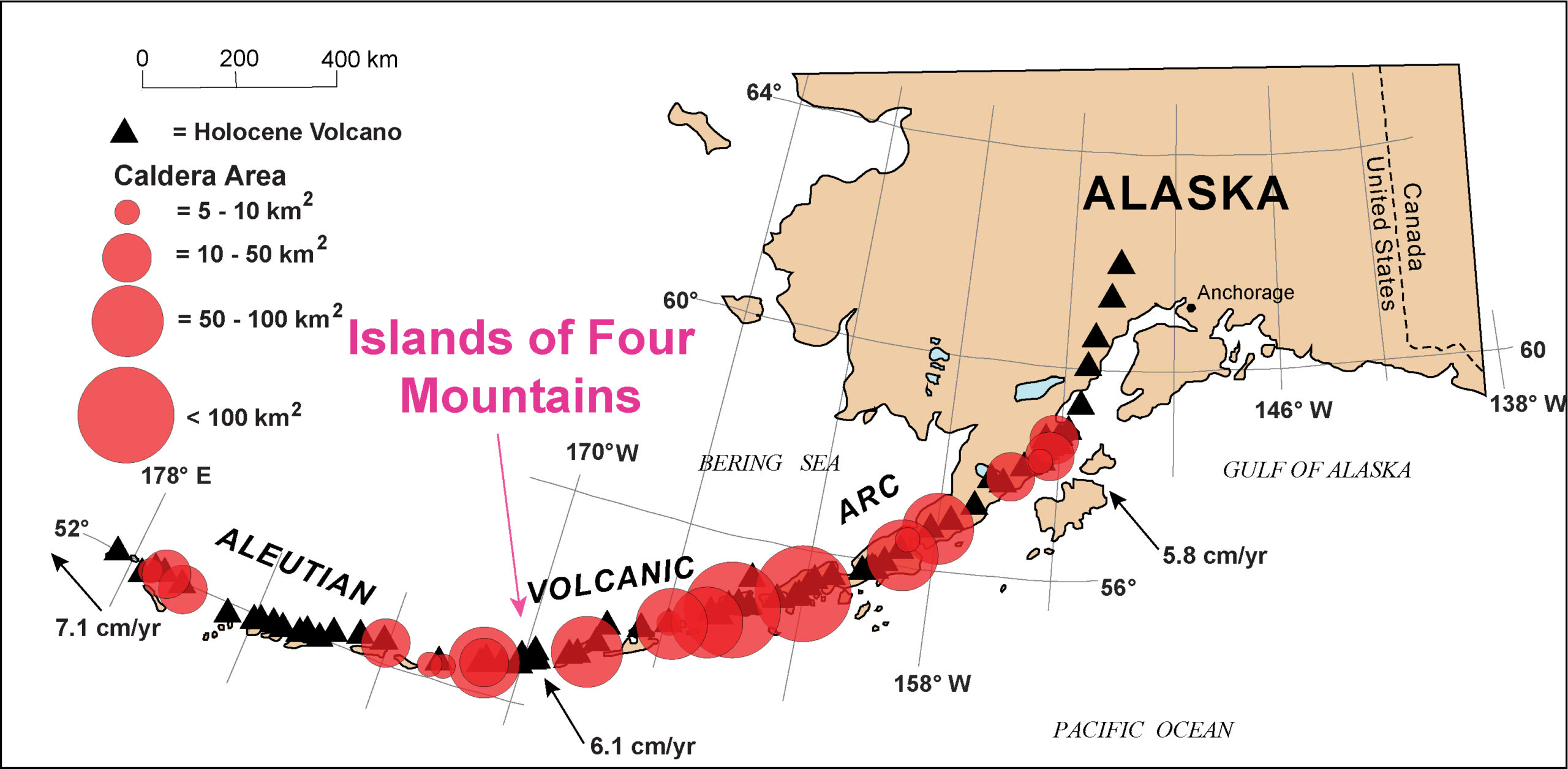As if we needed more upsetting right news right now, geologists have reason to suspect that a cluster of Alaskan islands is actually part of an interconnected volcanic system of the same kind seen at Yellowstone National Park.
Called the Islands of the Four Mountains (IFM), this volcanic archipelago is located along the Aleutian island chain. New research led by John Power from the U.S. Geological Survey at the Alaska Volcano Observatory presents evidence for “a large, previously unrecognised caldera” in the IFM, in research that will be presented December 7 at the AGU’s Fall Meeting 2020.
The cluster consists of six closely spaced stratovolcanoes, named Cleveland, Carlisle, Herbert, Kagamil, Tana, and Uliaga. Stratovolcanoes are what we stereotypically think about when we envision volcanoes: tall, steep mountains capped with a smoking cone. The region is also interspersed with a bunch of smaller cones and fissures. Of the six mountains, Cleveland has been the most active during the past two decades, creating ash clouds that reach 4,500 to 9,000 metres.

The alleged caldera has eluded detection for so long because it’s hidden by recent deposits and the ocean. And indeed, it wasn’t easy for these geologists to gather their evidence.
“We’ve been scraping under the couch cushions for data,” Diana Roman, a co-author of the study and a geologist at the Carnegie Institution for Science in Washington, D.C., explained in an AGU statement. “But everything we look at lines up with a caldera in this region.”
The evidence was scraped, as Roman put it, by analysing geological deposits, changes to the region over time, gas emissions, and gravity measurements (which indicate the density of buried rocks), among other clues. The IFM, it would seem, is being influenced by this previously undetected caldera.
Calderas are gigantic subterranean chambers filled with magma, and they’re known to produce some of the most catastrophic eruptions in our planet’s history (by comparison, stratovolcanoes are accompanied by comparatively tiny pockets of magma). And indeed, they’re often referred to as supervolcanoes for this very reason.

Yellowstone is probably the most recognisable caldera on Earth, owing to its size and potential threat. It’s not expected to erupt anytime soon, but should it happen, the caldera would pour lava over a region extending for 48 to 64 km. These eruptions can also produce copious amounts of ash, which can alter climates around the globe. Carried by the wind, sulphur aerosol and light ash particles would reach across the planet and likely cause “a notable decrease in temperatures around the globe,” according to the U.S. Geological Survey.
The possible caldera in IFM isn’t likely to match Yellowstone in terms of size or threat (and many other confirmed calderas exist in the Aleutians), but that’s not to understate the danger posed by these geological features. This is a potentially very serious discovery, and geologists might eventually have to reclassify the IFM volcanoes. The gigantic interconnected volcanic system could flare up in the future and with “severe global consequences,” according to the AGU statement.
[referenced id=”1225763″ url=”https://gizmodo.com.au/2020/06/volcanic-eruption-in-alaska-may-have-sparked-political-turmoil-in-ancient-rome/” thumb=”https://gizmodo.com.au/wp-content/uploads/2020/06/25/gykhlg3shhez2ekhkc3h-300×169.png” title=”Volcanic Eruption in Alaska May Have Sparked Political Turmoil in Ancient Rome” excerpt=”An unusually powerful volcanic eruption in 43 BCE has been linked to political upheaval on the other side of the globe, including the fall of the Roman Republic and the Ptolemaic Kingdom.”]
In addition to altering the climate, big eruptions can also result in social unrest and upheaval, as was the case in 43 BCE, when the Alaskan Okmok volcano, which is fuelled by a caldera, blew its stack. Recent research suggests this eruption indirectly led to the fall of the Roman Republic and the Ptolemaic Kingdom in what is now Egypt. So again, no joke.
To be clear, that the IFM islands are part of a caldera is not proven. It’s a strong hunch that now needs to be bolstered by further observations.
“Our hope is to return to the Islands of Four Mountains and look more closely at the seafloor, study the volcanic rocks in greater detail, collect more seismic and gravity data, and sample many more of the geothermal areas,” said Roman.
I obviously love science, but this is one case in which I’m really, really hoping the scientists are wrong. Seriously, please be wrong.
